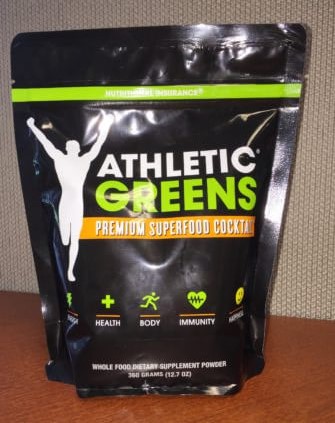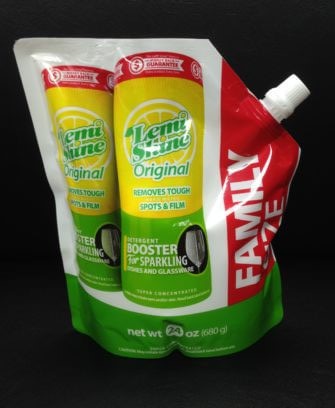 The contract packaging business continually adapts and evolves, presenting new and improved packaging solutions for consumer goods. Some package designs are short-lived, replaced by more effective innovations, while other packaging advances take hold as lasting industry standards. One of the biggest success stories shaping how modern goods come to market; flexible packaging is now a go-to solution for producers from diverse industries.
The contract packaging business continually adapts and evolves, presenting new and improved packaging solutions for consumer goods. Some package designs are short-lived, replaced by more effective innovations, while other packaging advances take hold as lasting industry standards. One of the biggest success stories shaping how modern goods come to market; flexible packaging is now a go-to solution for producers from diverse industries.
With benefits ranging from reduced material use to enhanced product freshness, premade flexible standup pouches are here to stay. Not only does the convenient packaging format appeal to modern consumers, but flexible pouches also contribute efficiency within the supply chain. Pouch packaging innovation has already come a long way, in a relatively short period of time. As a greater number of producers embrace the advantages of flexible pouches, standardization efforts are sure to add even more value to flexible packaging solutions.
Consumers and Producers Embrace Flexible Pouching Solutions
The relationships between products, packaging, and consumers are complex. Although it is demand for consumer goods that drives sales, packaging plays a key role connecting consumers with the products they crave. The best packaging solutions address consumer concerns and lifestyle trends. Today, that means effective product packaging must be convenient, secure, and portable. Flexible standup pouches meet all three consumer demands, providing an ideal packaging format for widespread food and non-food items.
Call for Convenience
Japan was early to embrace pouched convenience, paving the way for today’s spouted pouch advances. As the country experienced social shifts, introducing a greater number of women into the workforce, accessible food preparation became a necessity for Japanese families. This call for convenience sparked flexible pouch innovations such as time-saving boil-in-bag and microwavable food packages. Current U.S. pouch trends reflect a similar mandate from consumers – particularly young shoppers, who demand convenient dining solutions at home and food packaged for life on the go. With so much spending power behind them, Millennials’ continued call for convenience is a driving force lifting flexible pouches into a growing number of mainstream applications.
Adaptable Solutions
Flexible pouch packaging continues to evolve. Pouches can be made in various shapes and sizes. They can be constructed of a basic laminated layer of material or multilayer designs incorporating barriers appropriate for wide-ranging consumer goods. Depending upon the application, flexible standup pouches can be produced from roll-stock on line or provided as pre-made units, ready to be filled and sealed.
Further customization of flexible plastic pouches adapts the versatile format to suit whatever’s inside. Adding zip closures or sliders to pouches, as well as incorporating spouts and dispensing features into pouch designs make them more functional and expands their utility for producers and consumers. As a result, adaptable modern pouch solutions are now widely used in food, pharma, and beverage applications. Convenient, ready-to-pour spouted pouches represent the high-barrier flexible packaging industry’s fastest growing market segment.
E-commerce Benefits
The growth of e-commerce doesn’t show signs of slowing, so the most effective packaging solutions accommodate Amazon and other online sellers. Spouted pouches and flexible packaging options have distinct advantages compared to other types of packaging. The format continues gaining momentum as companies move to pouches for e-commerce.
As a greater number of products make their way to households by way of UPS and other shippers, breakage in transit is a growing concern. Bottles and other containers break during handling; pouches with spouts do not. According to one study, more than 40% of consumers negatively associate breakage inconvenience with the brand, rather than the shipper. The flexible format protects brand owners with a reliable alternative to rigid packaging, so pouch use is surging.
Seal and Barrier Innovation
Pouch technology enables packaging companies to build multilayer containers suitable for a wide variety of contents. As pouches have become more popular, barrier properties have advanced, adding value to the packaging format. These improved barrier properties increase food stability across the supply chain, resulting in longer shelf lives for consumables and consistent product integrity for non-food items packaged in flexible pouches.
Because pouches keep food fresh longer than some traditional packages, the format helps sellers market a greater variety of products and make goods available to a larger number of consumers.
Competitive Advantages
Packaging represents a substantial cost of doing business for producers, so cost-efficient packaging is always desirable. In addition to keeping per unit costs in line, bringing home the highest possible level of added value from packaging choices helps create a competitive advantage. Flexible standup pouches help producers compete in these and other ways:
- Multilayer pouches provide superior protection, resulting in less product loss.
- Pouches provide marketing opportunities that may not be appropriate for traditional containers. For instance, pouches can be merchandised as stand-alone units on shelves, or packed in shelf-ready formats. Pouches are also well-suited for use in multi-packed cases and cartons and some types of flexible pouches can also be hung for display.
- Pouches move efficiently through the supply chain, reducing freight costs when compared to some traditional packaging methods.
Benefits of Packaging Standardization
Flexible spouted pouches are fast becoming a packaging industry standard, within an infrastructure designed for other types of packages. Versatile flexible plastic pouches replace containers made of glass, paper, metal, and rigid plastic. Moving away from these types of packaging to flexible alternatives already yields cost-savings for some stakeholders, but standardization within the industry may lead to further financial efficiency.
 Standardization that limits the number of packaging styles can yield savings throughout the supply chain. During the packaging process, for example, standardization can reduce the amount of equipment that’s needed and result in fewer equipment changes on the packaging line. Using a standard packaging format can also lead to quantity discounts, when packagers use a single package type for widespread applications.
Standardization that limits the number of packaging styles can yield savings throughout the supply chain. During the packaging process, for example, standardization can reduce the amount of equipment that’s needed and result in fewer equipment changes on the packaging line. Using a standard packaging format can also lead to quantity discounts, when packagers use a single package type for widespread applications.
Because flexible spouted pouches are so versatile, standardization within food and beverage packaging applications could substantially streamline the procurement and packaging processes. In addition to direct savings and efficiency resulting from pouch standardization, it may be possible to cut costs on related accessories. From labels to closures, standardizing auxiliary pouch features adds another layer of efficiency to the packaging process. Finally, standardization results in additional savings during distribution. Transportation, storage, and handling costs can all be reduced by establishing uniformity within logistics channels.
Flexible pouches, particularly spouted, standup versions have fundamentally changed the packaging industry. Replacing bulky, heavy, breakable materials, flexible pouches are widely used for packaging food and beverages, as well as diverse non-food items. As the format continues expanding and consumers embrace the convenience and functionality of flexible packaging alternatives, standardization can help producers and their contract packaging partners increase efficiency and squeeze added value from modern flexible pouching innovation.
